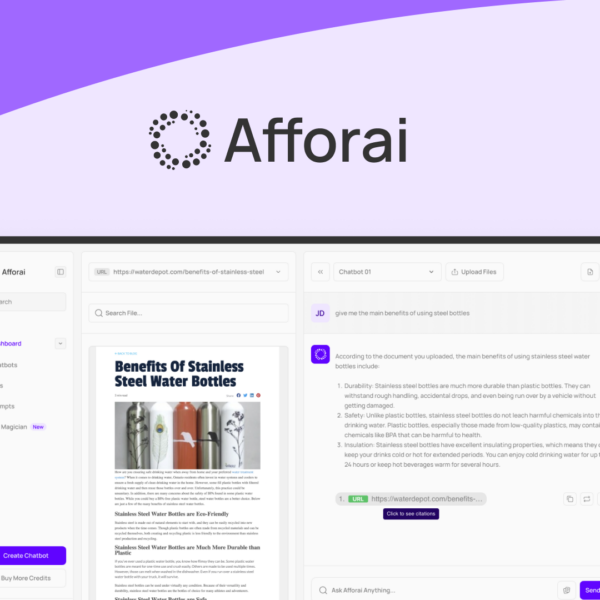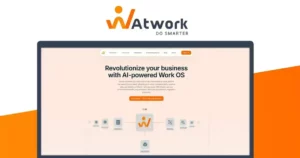A successful SaaS sales strategy involves understanding your target market, defining a strong value proposition, and utilizing CRM systems for better customer management. Overcoming challenges such as customer churn and competition is crucial to achieving long-term growth in the competitive SaaS landscape.
The SaaS sales strategy is crucial for any business looking to thrive in today’s competitive landscape. As more companies turn to software as a service, understanding effective sales techniques becomes essential. In this article, we’ll delve into the nuances of crafting a winning sales strategy, covering everything from models and key components to customer relationship management and how to measure success.
Understanding SaaS Sales Models
Understanding the different SaaS sales models is crucial for businesses looking to boost their revenue and improve customer acquisition. Typically, there are three primary models: direct sales, channel sales, and self-service sales. Each model comes with its distinct advantages and challenges, making it important to choose the one that aligns best with your company’s goals.
Direct Sales Model
The direct sales model involves the company selling its software directly to customers through a dedicated sales team. This model allows for personalized interactions and can be very effective for high-value deals. However, it also requires significant investment in a skilled sales team and training. Lead generation and management are critical components to success in this model.
Channel Sales Model
In the channel sales model, SaaS companies partner with third-party vendors or affiliates to sell their products. This approach allows for broader market reach without the overhead costs associated with running a direct sales force. However, managing relationships with partners and ensuring they are well-equipped to sell your software are key challenges that require attention to detail.
Self-Service Model
The self-service sales model enables customers to sign up for and use software without a direct sales interaction. This model often leverages online marketing and is ideal for products with lower price points. While it can reduce customer acquisition costs, it also means less customer support during the buying process, which could impact customer experience.
Choosing the Right Model
Choosing the right sales model depends on various factors, including your target audience, product complexity, and sales cycle length. For example, a complex enterprise software solution might benefit from a direct sales approach, while a simpler tool might thrive with a self-service model.
Ultimately, understanding SaaS sales models will help you tailor your approach to meet your business needs and your customers’ expectations. By selecting the right method, you can streamline your sales processes and increase your overall success in the SaaS marketplace.
Key Components of a Successful SaaS Sales Strategy

Developing a successful SaaS sales strategy involves several key components that together create a comprehensive approach to selling your software. Understanding these components can help your team navigate the competitive landscape and connect with potential customers effectively.
Understanding Your Target Market
The first step in crafting a SaaS sales strategy is to identify your ideal target market. Know who your customers are, what problems they face, and how your solution addresses their needs. Create detailed buyer personas to help your sales team understand and engage effectively with prospects.
Value Proposition
Your value proposition explains why customers should choose your SaaS product over competitors. It should clearly communicate the benefits of your software, including how it solves specific problems and makes customers’ lives easier. A strong value proposition fosters interest and helps potential customers understand what sets your product apart.
Sales Process Definition
Clearly defining your sales process is vital. This includes the steps a prospect goes through from awareness to purchase. Create a well-structured pipeline that outlines stages such as lead generation, qualification, sales demos, and closing. This helps your team understand where each prospect is in their journey and what actions to take next.
Effective Use of Technology
Technology plays a significant role in SaaS sales. Utilize customer relationship management (CRM) systems to track interactions and manage leads. Implement marketing automation tools to streamline communication with prospects and customers. By using the right technology, you can enhance efficiency and maintain a high level of customer engagement.
Feedback and Adaptation
Finally, regularly gather feedback from your sales team and customers to improve your strategy. Analyze what works and what doesn’t, and be prepared to adapt according to market changes and customer needs. Continuous learning and adaptation are essential in ensuring the long-term success of your SaaS sales strategy.
The Role of Customer Relationship Management in SaaS
Customer Relationship Management (CRM) plays a critical role in the success of a SaaS sales strategy. CRMs help businesses manage interactions with current and potential customers, streamline processes, and enhance overall customer experience. By leveraging CRM systems, SaaS companies can build stronger relationships and drive growth.
Centralized Customer Data
A CRM provides a central repository for all customer information. This allows sales teams to access important data such as contact details, previous interactions, and customer preferences quickly. Having this information readily available empowers teams to tailor their approach and respond to customer needs more effectively.
Improved Communication
Effective communication is crucial in sales. CRMs facilitate easier and more organized communication through tools like email tracking, task management, and reminders. By keeping all communication in one place, sales representatives can follow up with prospects and maintain professional relationships.
Automation of Sales Processes
CRM systems often come with automation features that streamline repetitive tasks. This can include automating email follow-ups, lead scoring, and data entry. By automating these tasks, sales teams can focus on higher-value activities, such as building relationships and closing deals.
Enhanced Lead Management
With a CRM, SaaS companies can track leads more efficiently throughout the sales funnel. From initial engagement to final sale, CRMs provide visibility into where each lead is in the process. This allows sales teams to prioritize efforts and improve conversion rates.
Analytics and Reporting
CRMs offer valuable analytics and reporting features that allow teams to measure their performance. These insights can include sales trends, customer behavior, and engagement metrics. By analyzing this data, SaaS companies can make informed decisions and continuously improve their sales strategies.
Measuring Success in SaaS Sales

Measuring success in SaaS sales is essential for understanding how well your sales strategies are performing. By using the right metrics, businesses can gain insights into their sales processes and make informed decisions to drive growth.
Key Performance Indicators (KPIs)
Identifying the right Key Performance Indicators (KPIs) is crucial. Common KPIs in SaaS sales include Monthly Recurring Revenue (MRR), Customer Acquisition Cost (CAC), and Customer Lifetime Value (CLTV). These metrics help you understand revenue generation, the cost of acquiring new customers, and value derived from each customer over time.
Customer Churn Rate
The customer churn rate is another vital metric. It measures the percentage of customers who stop using your service during a given period. A high churn rate can indicate dissatisfaction, so monitoring this figure helps identify areas needing improvement.
Sales Conversion Rates
Sales conversion rates reveal how effectively your sales team turns leads into paying customers. Tracking this rate helps you assess the effectiveness of your sales tactics and can guide changes to improve performance.
Sales Cycle Length
The length of the sales cycle is important to measure as well. Understanding how long it takes to close deals can provide insight into process efficiency and help identify any bottlenecks in your sales approach.
Customer Feedback and Satisfaction
Lastly, gathering customer feedback is crucial to understanding success. Regularly surveying customers about their experiences can provide valuable information on areas for improvement and help gauge overall satisfaction, guiding future sales strategies.
Common Challenges in SaaS Sales Strategies
Implementing a SaaS sales strategy is not without its challenges. Recognizing these common challenges can help businesses prepare and adapt their approaches to ensure success.
Market Competition
One major challenge is the high level of competition in the SaaS market. Many companies offer similar services, which can make it difficult to stand out. It’s essential to identify your unique selling points and effectively communicate them to your target audience to differentiate your product.
User Onboarding
Another common issue is user onboarding. Ensuring that new customers understand how to use the software effectively is crucial for customer retention. A complicated onboarding process can lead to frustration and increased churn rates. Offering comprehensive tutorials and support can help mitigate this issue.
Customer Churn
Customer churn is a persistent concern in SaaS sales. High churn rates mean losing revenue and customers who could have contributed to long-term growth. To combat churn, companies should continuously engage with customers, gather feedback, and provide exceptional support and value.
Sales Team Training
Another challenge is training the sales team. SaaS products can be complex, and ensuring that sales representatives thoroughly understand the product and its benefits is essential for closing deals. Regular training and updates on new features are necessary to keep the sales team informed and effective.
Pricing Strategy
Determining the right pricing strategy can be tricky. Companies must balance affordability for customers while ensuring profitability. A well-researched pricing model that reflects the value offered can help attract more customers without sacrificing revenue.
In Summary: Key Takeaways for SaaS Sales Success
Building a successful SaaS sales strategy requires understanding various key components and facing common challenges. Knowing your target market and crafting a strong value proposition are essential steps.
Effective customer relationship management helps maintain customer satisfaction, while measuring success through metrics like Customer Lifetime Value can guide improvements. Be prepared to tackle challenges such as market competition, user onboarding, and customer churn.
By focusing on these areas, your SaaS business can thrive and achieve long-term success in the ever-evolving software market.
FAQ – Frequently Asked Questions about SaaS Sales Strategies
What are the key components of a successful SaaS sales strategy?
Key components include understanding your target market, defining a strong value proposition, establishing a clear sales process, using technology effectively, and gathering customer feedback.
How can CRM systems improve SaaS sales?
CRM systems centralize customer data, improve communication, automate sales processes, enhance lead management, and provide valuable analytics for decision-making.
What strategies can help reduce customer churn in SaaS?
To reduce churn, focus on improving customer onboarding, providing excellent support, engaging customers regularly, and gathering feedback to make necessary adjustments.
How important is measuring success in SaaS sales?
Measuring success through KPIs like Monthly Recurring Revenue and customer feedback helps assess performance, identify areas for improvement, and guide strategic decisions.
What challenges do companies face in SaaS sales?
Common challenges include intense market competition, user onboarding difficulties, high customer churn rates, and ensuring sales teams are well-trained.
What role does pricing strategy play in SaaS sales success?
A well-researched pricing strategy ensures that the product is competitive while providing value to customers and supporting the company’s profitability goals.




